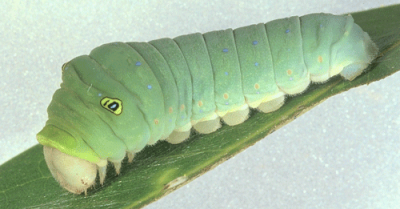The Eastern tiger swallowtail, Papilio glaucus, is one of the most common swallowtail butterflies in the eastern United States.
It is widely distributed from New England to the southern Great Lakes and the Great Plains states as well as to Texas and Florida.
The Eastern tiger swallowtail is a large butterfly with a 3 to 5.5 inch wingspread. Adults are typically yellow with four black bands on the front wings. The innermost band on the forewing aligns with the median black band of the hind wing. The wing margins are black with a row of yellow spots. Male tiger swallowtails generally have darker blacks and none of the blue and red scales on their hind wings. There is also a black morph form, in which black replaces the broad yellow expanses on the wings. The black morphs have the blue and red wing scales on their hind wings.

Eastern tiger swallowtails are typically found in treetops, meadows and gardens. Even though they are solitary creatures, you can sometimes see a “puddling” group of swallowtail males. Male butterflies come together at damp areas of the soil and drink water. The water contains sodium ions and various amino acids, which appear to allow them to live longer.
Their eggs are green and are laid singly on upper leaf surfaces of plants in the magnolia and rose families. There are usually two generations per year in their northern range. The full-grown, fifth instar caterpillars can be up to 2.5 inches long. They are green with a swollen thorax, faint blue dots on each abdominal segment, and a pair of false eyespots on the metathorax. The yellow eyespots are ringed with black and contain a smaller blue spot lined with black. There is a small black line above the blue spot.

Many species of trees and shrubs in at least seven families serve as hosts. In Florida, sweet bay (Magnolia virginiana) is the favored host whereas in other areas the tulip tree (Liriodendron tulipifera) and black cherry (Prunus serotina) are favored.
Male and female tiger swallowtails drink nectar from a wide variety of native and non-native garden plants.